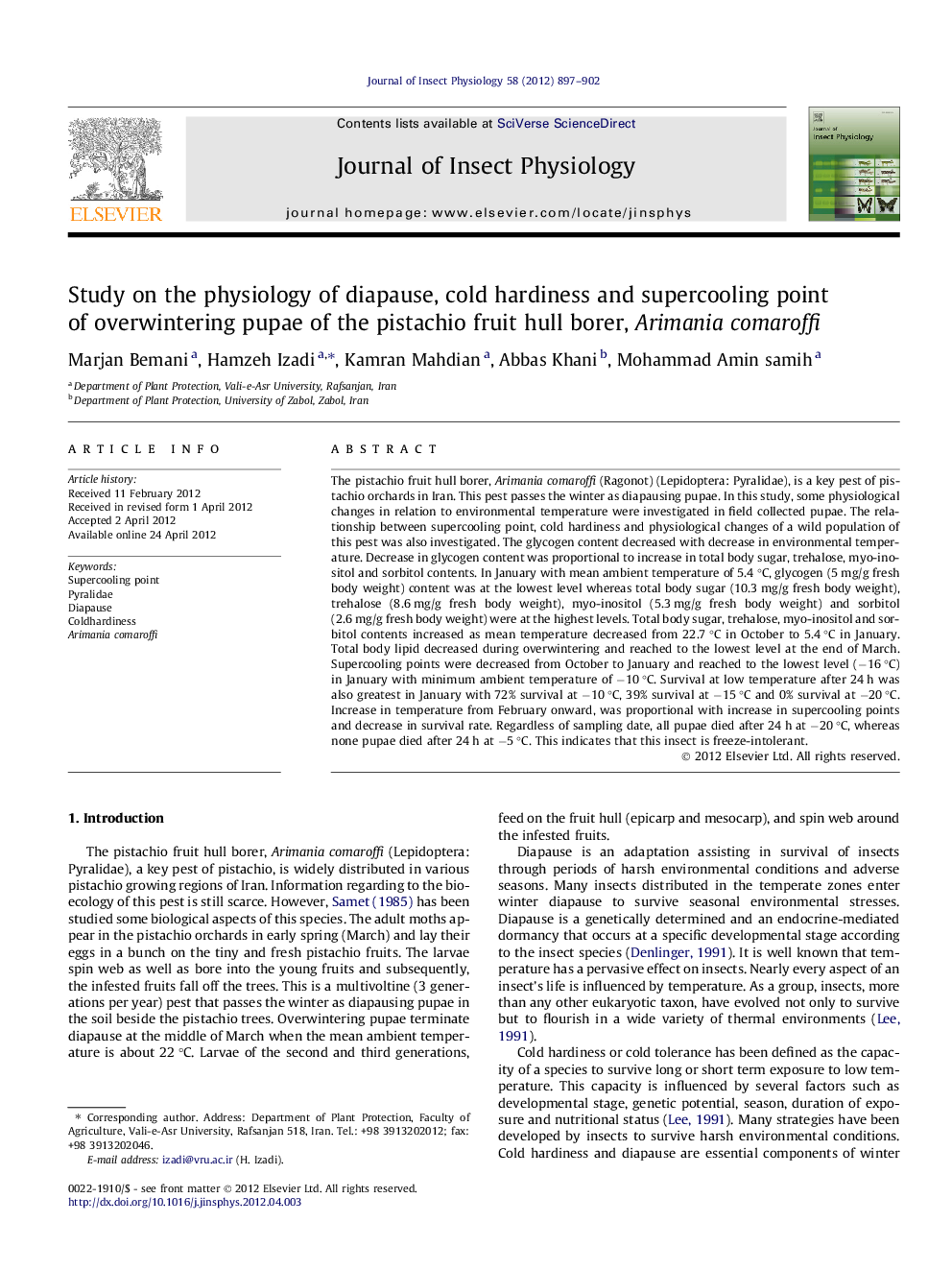| کد مقاله | کد نشریه | سال انتشار | مقاله انگلیسی | نسخه تمام متن |
|---|---|---|---|---|
| 2840527 | 1165330 | 2012 | 6 صفحه PDF | دانلود رایگان |

The pistachio fruit hull borer, Arimania comaroffi (Ragonot) (Lepidoptera: Pyralidae), is a key pest of pistachio orchards in Iran. This pest passes the winter as diapausing pupae. In this study, some physiological changes in relation to environmental temperature were investigated in field collected pupae. The relationship between supercooling point, cold hardiness and physiological changes of a wild population of this pest was also investigated. The glycogen content decreased with decrease in environmental temperature. Decrease in glycogen content was proportional to increase in total body sugar, trehalose, myo-inositol and sorbitol contents. In January with mean ambient temperature of 5.4 °C, glycogen (5 mg/g fresh body weight) content was at the lowest level whereas total body sugar (10.3 mg/g fresh body weight), trehalose (8.6 mg/g fresh body weight), myo-inositol (5.3 mg/g fresh body weight) and sorbitol (2.6 mg/g fresh body weight) were at the highest levels. Total body sugar, trehalose, myo-inositol and sorbitol contents increased as mean temperature decreased from 22.7 °C in October to 5.4 °C in January. Total body lipid decreased during overwintering and reached to the lowest level at the end of March. Supercooling points were decreased from October to January and reached to the lowest level (−16 °C) in January with minimum ambient temperature of −10 °C. Survival at low temperature after 24 h was also greatest in January with 72% survival at −10 °C, 39% survival at −15 °C and 0% survival at −20 °C. Increase in temperature from February onward, was proportional with increase in supercooling points and decrease in survival rate. Regardless of sampling date, all pupae died after 24 h at −20 °C, whereas none pupae died after 24 h at −5 °C. This indicates that this insect is freeze-intolerant.
Figure optionsDownload as PowerPoint slideHighlights
► We studied the physiological adaptation of diapausing Arimania comaroffi.
► We examined changes in the levels of coldhardiness and supercooling point.
► The glycogen content decreased with decrease in environmental temperature.
► Trehalose, myo-inositol and sorbitol reached to the highest levels in January.
► Supercooling point decreased as ambient temperature decreased.
Journal: Journal of Insect Physiology - Volume 58, Issue 7, July 2012, Pages 897–902